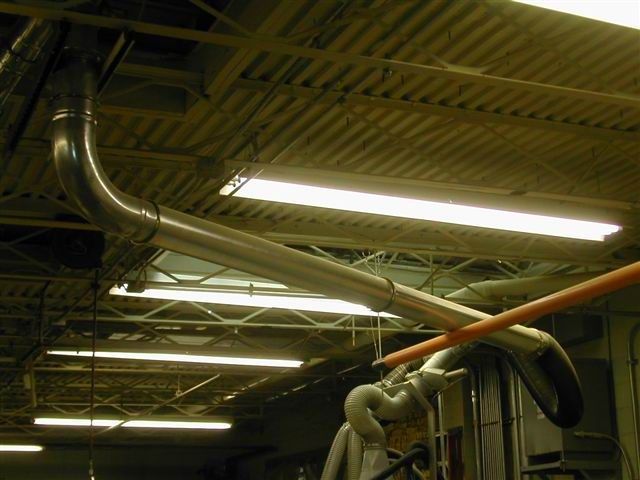Question
What is the advantage to having a large centralized dust collector as opposed to individual units on each machine? I am about to add a CNC router to the shop and am wondering if it makes sense to hook everything up to one big unit.
Forum Responses
(Dust Collection, Safety and Plant Operation Forum)
From contributor P:
This is what we had in our shop for the last 15 years. It was fine as we grew. We would add a machine and add a point of use dust collector (cheap Delta units to 10hp Dustiks units), turning them on when we were running that machine. We are in the process of at least putting our CNC router, CNC panel saw, CNC dowel drill-inserter and edgebander on a central collection system that will set outside the building. This will have a return air so as not to lose all our heat. The main reason for this is the noise and the barrels of sawdust we're producing. Individual units have worked well (less ductwork). But the noise and waste removal has become a chore, so we are investing in a central system.
Cons: Unit's down, the whole shop is down. All of your eggs in one basket. May have to be located outdoors, permits, etc. Spark detection requirement. Adherence to NFPA codes.
Individual Units -
Pros: Units down, roll over another one. Can be obtained in both single stage and two stage according to the requirement. Much less of a capital expenditure.
Cons: Requires a lot of additional floor space. High maintenance - my dust bag is full, I'll see you guys in about 15 minutes, I have to dump it out back (X how many employees). Many high speed production machines that are being used today can not be serviced with a portable dust collector. Additional electrical wiring throughout the shop.
I once saw a 25 man shop go up and they decided on individual collectors for flexibility. They spent 60 m/hrs/wk dumping bags/barrels. They said it was the biggest mistake they ever made.
A good central collection will be quieter, more energy efficient, cleaner, and of greater value than the options. If you are touching dust or containers of dust, you are losing. Don't let the fear of committing to rigid pipe scare you away. Do your best planning, get an expert collector company involved, and install. You can change it if needed, as you need it. With multi collectors, you pay all day every day for convenience.
When considering the size of unit needed for a large panel saw and CNC, the mobility is not usually an option. They are usually mounted units that are not mobile. Small, single units will always have a place in wood shops (i.e. backup unit, temporary unit for new machine). Keeps the shop going while moving machines or altering duct work.
